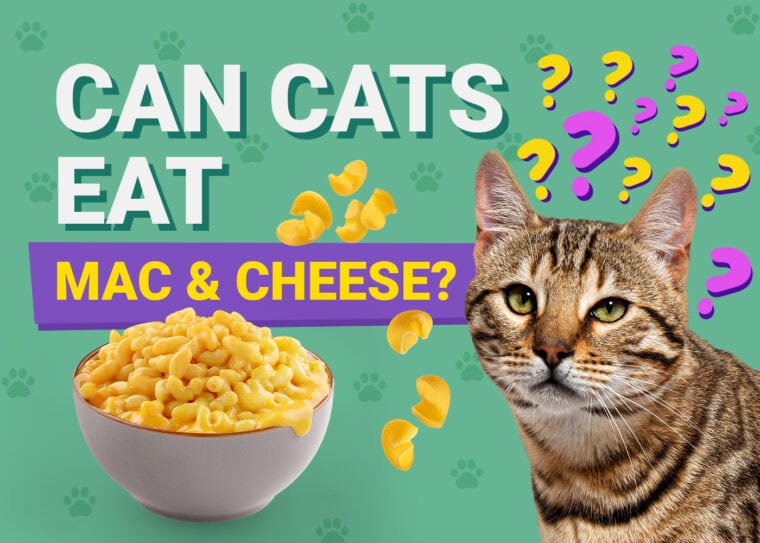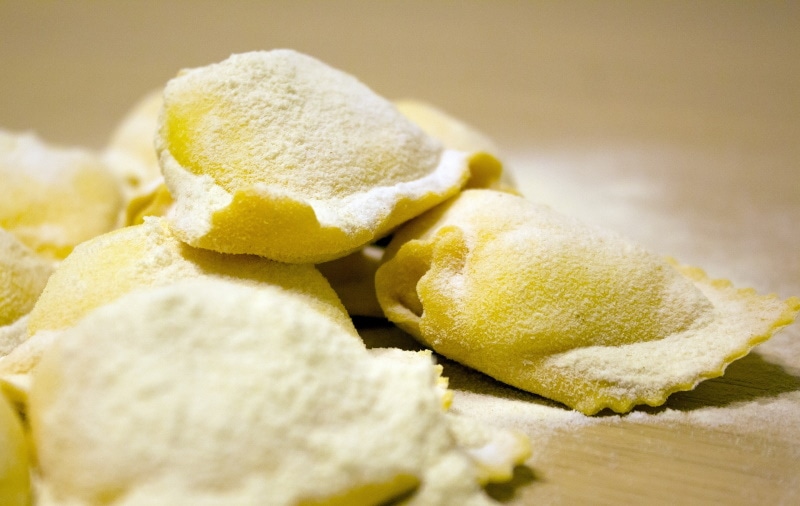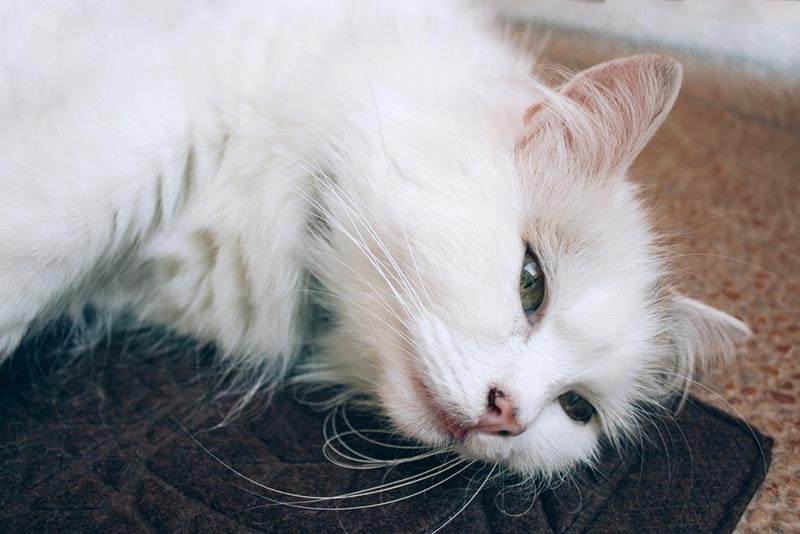
Mac and cheese is a popular favorite and feel-good dish in many homes. It’s easy to prepare, warm and comforting, and the gooey texture and cheesy flavor are hard to resist!
No, cats cannot eat macaroni and cheese as it contains a number of ingredients that are potentially harmful to them. To clarify, a typical macaroni and cheese made with pasta, milk, cheese, cream, butter, and salt, contains no ingredients that are toxic to cats. However, the dish contains dairy, which can be difficult on a cat’s stomach and may cause vomiting and diarrhea. Additionally, if the dish contains onions or garlic, it is definitely not safe for your cat.
 Can My Cat Eat Mac and Cheese?
Can My Cat Eat Mac and Cheese?
Macaroni is a pasta mixed and baked with cheddar cheese and other ingredients to create mac and cheese. It can also be purchased as a ready-made meal, and the packages will usually contain the noodles with a cheese sauce powder. Along with dairy, people will usually add salt and other spices such as pepper and garlic.
Cats can experience stomach upset if they consume too much dairy, which is why It is better left out of their reach.

Is Mac and Cheese Safe for Cats to Eat?
Mac and cheese is a dish made of simple ingredients, and while most of these ingredients are not toxic to cats, they can cause health problems if your cat consumes too much of it. On the other hand, some mac and cheese contain flavors and spices that are toxic to cats. Let’s break the ingredients down to understand how safe or unsafe mac and cheese is for cats.
The Common Ingredients in Mac & Cheese
Pasta
Although it isn’t the healthiest option, a small portion of pasta should be okay for your cat to eat. Pasta is made up of three basic ingredients: flour, water, and eggs, which are all fairly safe for cats to consume. However, it is high in carbohydrates, which cats do not need. Feeding your cat pasta regularly could cause it to become overweight and may lead to arthritis and diabetes.

Cheese
The cheese sauce is usually made from flour, milk, cheese, and butter. That’s a lot of dairy, and cats can’t eat dairy because most of them are lactose intolerant. This means they lack the enzymes required to digest dairy products. While a few nibbles won’t cause many problems, if your cat continues to eat cheese, it can develop gastrointestinal problems, including diarrhea, bloating, and gas. The fats in cheese also raise blood cholesterol levels, increasing the risk of heart disease and stroke.
Bacon
Some mac and cheese recipes include bacon for an extra crunch and protein. While cats can eat bacon in moderation, you should be aware of the bacon’s high fat and sodium content. Again, a little nibble should be fine for your cat to enjoy.
Garlic and Onion
Garlic is extremely toxic to cats. Onions are a part of the same family and are also toxic to cats, but garlic is considered to be five times more poisonous than onions. Poisoning from onions and garlic causes gastroenteritis which can include nausea, vomiting, diarrhea, drooling, oral irritation, abdominal pain, and oxidative damage to red blood cells, which causes them to rupture.

 What Should I Do If My Cat Ate Mac and Cheese?
What Should I Do If My Cat Ate Mac and Cheese?
If your cat has taken one or two bites or licks of your mac and cheese, there is probably nothing to worry about. If the dish contains onions or garlic, you must monitor your cat for any signs of poisoning. Cats only need to consume around 2.3 grams of onion per pound of its weight to have an effect, while garlic is even more of a hazard.
Onion and garlic poisoning can be delayed, and clinical signs may not appear for several days. If your cat has a large portion of your mac and cheese containing hazardous ingredients, you should call your vet immediately. Your vet may induce vomiting if the ingestion is recent, or they may administer activated charcoal to prevent the toxin from entering the body.
If the dish does not contain any garlic or onion, keep an eye on your cat and watch out for signs of gastrointestinal issues such as:
If your cat presents any of these signs of lactose intolerance, contact your vet.

A Healthy Cat’s Diet
Cats must get their nutrients from meat. A healthy cat diet should consist of meat-based ‘cat food’ and water, with treats accounting for no more than 5% of their daily diet. Mac and cheese is not a good addition to their diet because it contains ingredients that can cause stomach upsets, carbohydrates that aren’t needed, and a caloric intake without nutrients.
Feed your cat appropriate servings of high-quality cat food. It should have protein listed as the first ingredient, and it should meet the American Association of Feed Control Officials (AAFCO) feline nutritional guidelines. It’s important not to overfeed your cat. A 10-pound indoor cat only needs about 250 calories per day. Always read the guidelines on your cat’s food and measure the meals to ensure your cat is getting the right amount.
Cats typically consume one ounce of water for every half-ounce of dry food that they eat. A normal, healthy cat should drink about four ounces of water per 5 pounds of body weight per day.
Knowing exactly what your feline companion can and cannot eat will help you become the best pet parent. Recognizing that not all cat bowls are equal is also key! The Hepper NomNom Cat Bowl sets itself apart from traditional options by catering to the specific needs of cats. The innovative design offers whisker relief via shallow dishes and promotes digestion with a slight bowl elevation. Find out if the Hepper NomNom is right for your cat by clicking here.
At Pet Keen, we’ve admired Hepper for many years and decided to take a controlling ownership interest so that we could benefit from the outstanding designs of this cool cat company!
 Conclusion
Conclusion
While mac and cheese is a favorite dish among humans, it’s best to keep it away from your cat. While a little nibble will most likely be okay, if your cat has had a larger amount, the lactose in the cheese sauce may cause gastrointestinal upset. More importantly, if the mac cheese includes onions and garlic, you should call your vet immediately because the ingredients are highly toxic. Since mac and cheese is not healthy for cats, we suggest serving high-quality cat food and treats instead.
You might also like:
- Can Cats Eat Rice Krispies? Vet Reviewed Facts & FAQ
- Can Cats Eat Turkey Bacon? Vet Approved Health & Safety Guide
Featured Image Credit: JumpStory


 Can My Cat Eat Mac and Cheese?
Can My Cat Eat Mac and Cheese? What Should I Do If My Cat Ate Mac and Cheese?
What Should I Do If My Cat Ate Mac and Cheese?




